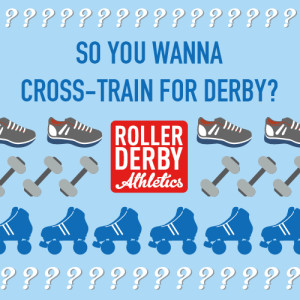
SO YOU WANNA CROSS-TRAIN FOR DERBY?
So you’re pretty sure you ought to be training off-skates to be at your best on the track. But where should you start? What should you do? How many, how long, how high, how often, just… HOW?
Here’s a simple primer for getting started or levelling up with cross-training for roller derby, no matter what level of fitness you’re starting with.
Find the description that best matches you, and follow the relevant guidelines. You’ll be on your own personalized path to derby domination before you can say “plyometrics”.
The Roller Derby Athlete.
Yes, I’m talking to you. All of you!
The primary focus of every single athlete’s cross-training efforts should be injury prevention, no matter what your fitness level is, from beginner to Olympian. If you’re new, that starts with building fundamental strength. If you’re a stronger athlete, you still need to carve out time for proprioception, stability, core strength, and working on any problem or weak areas. I call this PRE-hab. You know – that thing you do now, to avoid doing RE-hab after an injury later.
Roller Derby Athletics’ Pre-Hab training resources include:
- Avoiding/reducing Derby Concussions
- Feet and Ankles
- Stability Training
- Dynamic Warm Up
- How to Stretch Everything in 8 Minutes
- Happy Knees
- How to Engage your Core
- How to Build a Derby Booty
Work one or two of the Pre-Hab exercises, or full routines, into each off-skate workout (or as part of your warm up before practice).
The Newb.
You’re completely new to sports, or it’s been a long time since you were active. You might struggle with your 27-in-5 and other basic skills. Lunges feel weird, push-ups are a chore, and you don’t have as much control as you would like to on your skates. You’re pretty sure you should be doing some off-skates something-or-other, but you’re unsure of which exercises to do, let alone how to do them with proper form.
Start with: A few sessions of introductory Yoga or Pilates classes. Talk to the gym or studio staff and find out which classes provide instruction on alignment and posture so you can learn the optimal form and create good muscle memory. Progress to the intermediate levels when your instructor tells you you’ve nailed the form. As an alternative, you could work with a personal trainer for 3-5 sessions. Explain the basics of roller derby to her (always turning left, plough stopping, blocking), and ask her to help you learn good body positioning for squats, lunges, and planks.
Don’t forget: your PRE-hab. See above!
To progress: Build strength through bodyweight exercises, or weight training. Shoot for weight that feels heavy and makes 12-15 repetitions feel really challenging. Try for three sets of each exercise.
Resources: Check out the Proper Form Pre-Hab for some good posture and positioning basics.Try the yoga resources at Flat Mat Roller Derby or non-derby specific ones like Do Yoga With Me.Com (free), My Yoga, by GAIAM (free trial, then monthly fee), or Yoga International (free, pay to download). Check out the free BasicsBuilder training program right here at Roller Derby Athletics: eight-minute workouts you can do once a day to build your basic strength and stability.
The Recovered and Converted.
YOU’RE BACK! You suffered a totally crappy and/or traumatic injury that sidelined you for way too long. You want to prevent future injuries (no guarantees, but you’re going to do your best), and you need to get strong.
Start with: Hopefully this goes without saying but… start with doing your physio/rehab exercises! Once you get the all clear, start re-building your basic strength, and gradually progress to more explosive movements like sprints and jumping (assuming a lower body injury).
To progress: Continue doing your prescribed rehab exercises; keep yourself challenged and add instability wherever possible to increase the level of difficulty. Check out the Stability pre-hab for ideas. Focus your off-skate training on your “skating muscles,” with squats, lunges, and other exercises for glutes, adductors and abductors. Step-ups onto benches and chairs are great for replicating aspects of the skating stride.
Resources: Do the exercises your injury allows from the BasicsBuilder program any time (it’s free!). The CoreBuilder program provides no-impact strength training, and is a good bet for people with back pain or folks with a lower body injury who can bear weight but have limitations. StrideBuilder is the ideal training session to get your “derby legs” and cardio back, and will require only minimal mods for someone with an upper body injury. See “The Newb” above for good yoga options.
The Off-Season Slacker.
Whoopsie-daisy. That first practice after the off-season sure did creep up fast. You practically had to call a search party to find your skates under piles of beer cans and takeout boxes… Time to get yourself back in shape before that first bout of the season!
Start with: well heck, there’s no time for a staged approach. You need to get your fitness back, and fast! Focus on high intensity interval training (HIIT) workouts, spin classes or cycling, and explosive strength like plyometric exercises. If you were lifting weights previously, then hit the gym and pick up about 5-10% lighter than your last session before ramping back up.
Remember: don’t start with anything significantly harder than you were doing before you took a fitness vacation. Start with the intensity/length/level you were training at before your break, or as close to it as you can manage, then start to increase reps/intensity/etc. from there.
Resources: I know some skaters who love the structure of the P90X and Insanity workout DVD programs to keep them on track. Personally, I’m partial to the RDA: Pump Up Your Jam six week training intensive. Why? ‘Cause I made it to be derby specific, and it’s the perfect pre-season kick-start to your system. Alternatively, you could just search “HIIT workout” on YouTube and roll the dice on quality…
The Up-And-Comer.
You’re skating pretty well, and you’ve got a good base of fitness, but you want more. Maybe you’re suddenly the veteran or captain on the team and you want to step it up a notch to support your line. Or perhaps you’re gunning for that travel team roster spot. Either way, you’re looking for that edge over your competition, and want to be challenged.
Start with: My guess is you’ve already started. You’re already doing some off-skate training and probably have good fundamentals and strength. High Fives for you!
To progress: If you’re not lifting weight, and you’ve got access to a gym, DO IT. Strong skaters are… yep, strong skaters! Shoot for 2-3 sets of 10-12 reps of each exercise, a couple times a week to start, and try to use free weights over machines wherever you’re comfortable doing so. You should be reaching failure at the end of each set at your chosen weight. Trust me, you’ll feel stronger than ever! On days you’re not lifting, throw in some cardio work (jog, bike, HIIT). If getting to the gym is out of the question, or if you’re uncomfortable with weight training, level up by working your way through the Pump Up Your Jam program (see above).
Don’t forget: Your pre-hab. Work a few minutes of stability training into the warm-up or cool-down for each workout.
Resources: Most gyms offer a free intro session with a personal trainer when you join, or if you haven’t done one in a long time, to help you learn the weight room ropes. For a weekly derby-specific workout, plus nutrition resources, challenges, and more, have a look at RDA’s All-Star Access options.
The Determined Jammer.
Perhaps last season you got pushed around way too much for your liking while jamming. Or maybe you disliked that feeling of simultaneously having flames destroy your lungs from the inside while your legs felt like they were skating through hip-deep water? Then again you could be a long-time blocker who finds herself dreaming of donning the star next season…
Focus on: Explosive strength and stamina. If your basic strength is there, graduate to plyometric training (jumps). Throw in some HIIT sessions that do double-duty by punishing your legs (think squat jumps, tuck jumps, agility hops, any kind of jumps!). Attend spin classes, because dang will they ever work you on that bike!
Remember: your cardio training should try to replicate derby jams as much as possible; long slow jogging (for example) isn’t the fastest way to build up your endurance for this sport (although it’s great to build your base). If you’re trying to accelerate your cardio quickly, focus on interval training, and make yourself work, HARD.
Resources: The StrideBuilder program will help you work on your speed, power, and endurance with 3-4 workouts per week. For a more full-body intensive where you’ll train up to 6 days a week, try Pump Up Your Jam. The Internet is your friend for finding your local spin class options!
The Competitor.
You’ve been training hard on your skates, and you’re playing at the highest level in your league. You need to supplement your weekly “four practices, plus scrimmage, and Sundays I coach fresh meat” weekly routine with some serious off-skate training to help your team crush it come tournament season.
Focus on: If you want to crack into the upper divisions of the sport, advanced weight training is pretty much a given. Prioritize the classic lifts (bench press, squat, deadlift, cleans) to dramatically increase your power. You can do bodyweight-only exercise, but it will limit your progress in the long run.
To progress: add plyometrics! Jump high, jump long, jump often. Add 1-2 plyo sessions per week. You can double these up with on-skate training days, but ideally not with strength days, if you can avoid it.
Don’t forget: No medals will be awarded for over-training zeal. Plan a rest day at least once a week. And do your Pre-Hab!
Resources: Start with a qualified trainer to learn the heavy barbell lifts. Community centre facilities usually have reasonable rates and qualified staff. Try the Super-Plyo workout as just one example of an advanced plyometric routine. And if you want more like that, check out the StrideBooster program, which includes strength, agility, and power training for taking your game to the competitive level.
But wait!
You have 7 kids and 3 diabetic parakeets that require a lot of attention; you can’t do jumps in your apartment cause the angry neighbour downstairs calls the cops; you don’t own shoes; you’re a germophobe and can’t enter a gym without a hazmat suit… Whatever it is, you’re a special snowflake. What should YOU do?
My dear special snowflake: just do what you can, and what makes you feel great (ahem, focus on how you feel after the thing!).
No one said you had to be the queen of the gym to be successful and have fun at derby! Every little bit counts. Your level of devotion to the sport and a balanced life will dictate how much energy you personally dedicate to cross-training for roller derby.
Do what you can, with what you have, and enjoy the ride.
Got questions?
Ask ‘em in the comments below! We love comments. Comments are the best (after pre-hab, that is. Pre-hab is the actual best).
xoxo Booty Quake

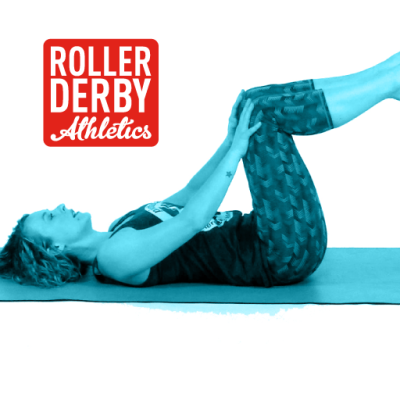 Pre-Hab: How to Engage Your Core
Pre-Hab: How to Engage Your Core 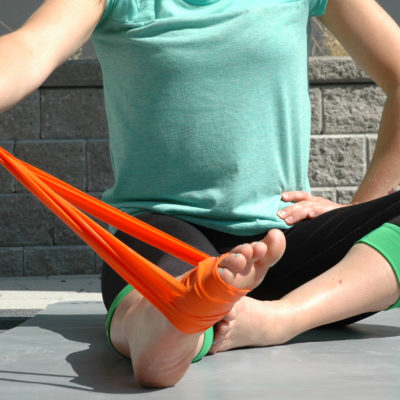 Prehab! Feet and Ankles
Prehab! Feet and Ankles 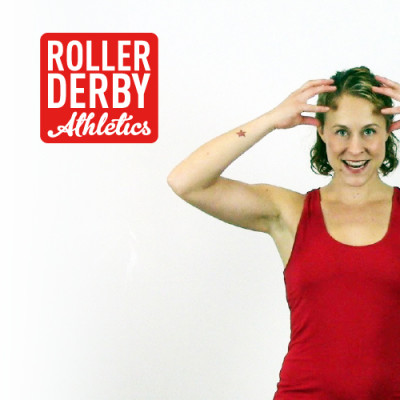 PreHab: How to Reduce Concussions
PreHab: How to Reduce Concussions 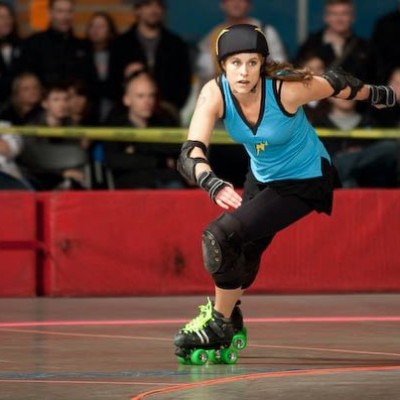 How to Improve at Derby’s 27 Laps Test
How to Improve at Derby’s 27 Laps Test 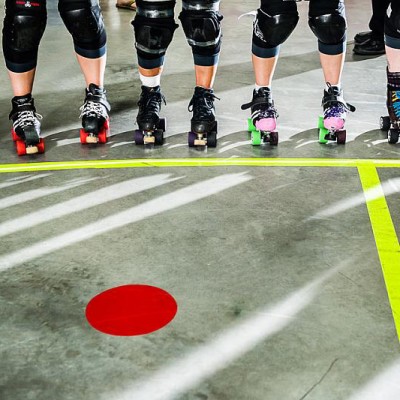 Fresh Meat – You Got This!
Fresh Meat – You Got This!
Love this! It’s just what I needed! With respect to weight training, do you recommend going into ‘maintenance mode’ during bout season, or keep going hard at it?
Great question, Penny. It depends a bit on what level you’re competing at, but in general you should focus your off-season (such as it is – I know lots of leagues have minimal downtime) on building strength and power, then move into maintenance + agility during the competitive season. You might maintain weight but lift fewer times per week, and add some plyo and agility work instead. Play around with “volume” (weight x reps x sets) and find something that helps you maintain but not burn you out. Hope that helps!
I have a weak ankle from rolling it while jamming so still sore when trying to do running toe stops and hockey srips. What are some good strength training tips to help ankles?
Neele – check out the Feet And Ankles Pre-Hab video linked to in the article!
I saw some comments on Facebook taking issue with the statement, “You can do bodyweight-only exercise, but it will limit your progress in the long run,” under “The Competitor,” so I thought it would be good to clarify what I meant to say. I am a huge believer in bodyweight exercises, and use them all the time. Doing bodyweight exercises will not limit you. However, I think doing bodyweight work for strength exclusively (without also doing weighted lifting) has its limits. A muscle that trains to lift 100 pounds of body weight will not have the capacity to become as strong as a muscle that is trained to lift 200 pounds of plates. But, I’ll reiterate the point, “do what you can, with what you have” :-)